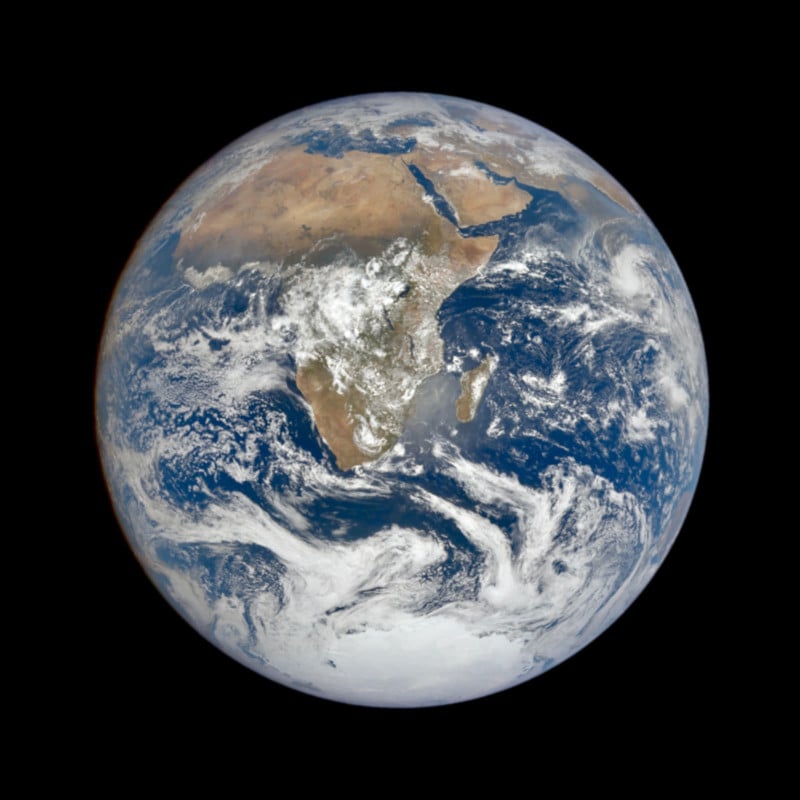The photo of the full Earth taken by Apollo 17 astronauts in 1972 is one of the most iconic photos of the 20th century. Colloquially known as the 'Blue Marble', it helped to kickstart environmental movements in the 1970s.
Now NASA has taken a new image from the Deep Space Climate Observatory and it shows some notable changes to the Earth since the original was taken 50 years ago. Even to my untrained eye, they're noticeable.
 |
The Blue Marble in 2022
The Antarctic ice sheet has visibly reduced in size, even though the main losses to the Larsen ice shelves on the Antarctic Peninsula are not visible in this particular image. Differentiating between the permanent ice sheet and seasonal sea ice is also difficult. When the new photo was taken, sea ice was still in retreat from the previous winter.
While it can be hard to differentiate between snow and cloud in satellite images, in the original photo, some snow appears to be visible on the Zagros and Central mountain ranges in Iran (north of the Arabian Gulf). This snow has vanished entirely in the new image. However, this is again within the range of seasonal variation, and research has failed to identify any significant long-term trend in seasonal snow cover in Iran between 1987 and 2007.
Most striking is the reduction in dark green vegetation in the African tropics, particularly at their northern extent. The dark shadow of Lake Chad in the northern Sahara has shrunk, and forest vegetation now begins hundreds of miles further south.
If you have any appreciation for the historical timeframes of the Earth's evolution, this should give you pause. If you don't understand geologic timeframes, read The Ends of the World by Peter Brannen. It will rock your world. |
No comments:
Post a Comment